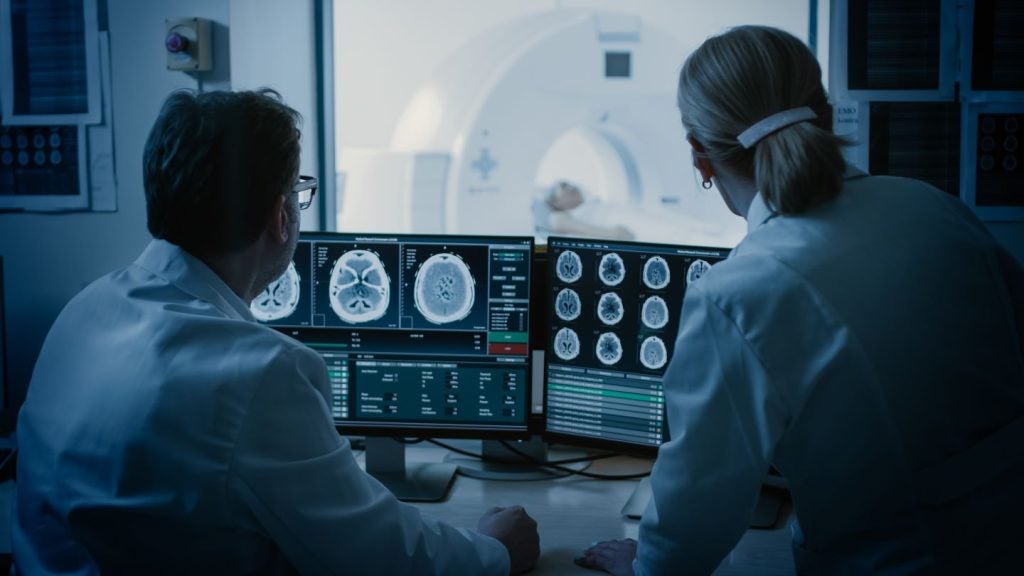
In recent years, IVF patients, clinicians and fertility centres have increasingly turned to innovation in technologies and tools to support and augment patient care.
As advances in science and technology are transforming possibilities in reproductive health, IVF is no exception. Devices such as remote monitoring devices for patients, including at-home urine testing to monitor hormones and technological advances in artificial intelligence (AI), alongside data-driven platforms for clinics are available.
In the post-Roe-era, the IVF space and broader reproductive healthcare sector are watching to see how the overturn will impact individual rights and the role of technology.
Roe overturn and the IVF process
“The spectre of women’s reproductive decisions being determined by the government is concerning at every level, and fertility treatment cannot be taken for granted in such an environment,” says Gary Nakhuda, co-founder of Olive Fertility Center in Canada.
Ahead of the Roe versus Wade verdict on 24th June 2022, clinics were reported to be moving frozen embryos out of US states that were expected to ban abortions, signalling a collective concern that reproductive autonomy in the IVF space was under threat.
See Also:
“Without Roe as a constraint on how far states can go to restrict access to abortion, states may feel emboldened to begin to more aggressively regulate the provision of other types of reproductive health care, including fertility care,” says Katherine Kraschel, Executive Director at Solomon Center for Health Law and Policy and Lecturer in Law at Yale Law School.
How well do you really know your competitors?
Access the most comprehensive Company Profiles on the market, powered by GlobalData. Save hours of research. Gain competitive edge.

Thank you!
Your download email will arrive shortly
Not ready to buy yet? Download a free sample
We are confident about the unique quality of our Company Profiles. However, we want you to make the most beneficial decision for your business, so we offer a free sample that you can download by submitting the below form
By GlobalDataIn the IVF process, eggs are fertilised in a laboratory. “IVF may be impacted in states that have passed laws defining life to begin at fertilisation since the overturn of Roe v. Wade,” says Stephanie Boys, Associate Professor of Social Work, Adjunct Professor of Law at Indiana University. If a state defines life as beginning at fertilisation, they could go further to limit the number of embryos created at each IVF cycle, outlaw cryopreservation and prevent destroying embryos that are currently preserved, Boys relays.
The role of technology in IVF
“Embracing telehealth, catalysed by the changes during the pandemic, has been enormously beneficial to patients,” says Nakhuda, as they can have interactive consultations with their providers without needing to travel for office visits. Additionally, “at-home testing is accelerating”, Nakhuda adds.
“Through the pandemic, patient care in the US has rapidly transformed, with virtual care being accepted as a form of treatment across the board,” says Mira. However, access to fertility treatments is restricted to those who live near fertility clinics or can spend a month in the city where their clinics are, with variations shaping the IVF process for patients.
Across the US, for example, “every clinic/clinician has a different process for deciding medication dosage and timing”, says Paxton Maeder-York, CEO and Founder of Alife Health. “This important part of the process directly impacts the number of eggs retrieved, impacting the number of embryos created and, ultimately, the chance of clinical pregnancy,” Maeder-York adds.
Today’s clinician-focused tools centre on problem-solving, supporting various healthcare professionals at the forefront of managing patients’ IVF procedures to help provide beneficial patient outcomes. Healthcare professionals can see better fertilisation, improved embryo culture methods and higher success rates in the embryology laboratory.
AI-led tools that use baseline data to make predictions about egg retrieval are used to help improve outcomes and standardise the process. Subsequently, these can support reproductive endocrinologists in choosing the optimal medication dosage and timing to maximise the number of mature eggs retrieved from an ovarian stimulation cycle.
Technology providers in the fertility treatment space have seen the challenges of aggregating large datasets in this field and are developing solutions to understand extensive datasets better. Embryologists typically have a manual process for reporting on embryo quality. They will grade embryos while looking through a microscope, transcribe that information into their electronic medical record (EMR) systems and generate reports to share with the treating physician. Embryo image capture systems can simplify image capture, storage and organisation of embryo images while improving the efficiency of the grading process by syncing with EMR.
At-home ultrasonography that can be self-administered by the patient and interpreted remotely by the physician is “on the horizon” too, Nakhuda says.
Updates to technology post-Roe?
As fertility technologies aim to improve the overall IVF experience and success rates, people may be concerned that tools designed to support people’s reproductive health may be affected.
“US Courts are currently deciding what technology can be admitted in court cases regarding prosecution for performing, obtaining or assisting an abortion,” says Boys. Google searches, period tracking apps and the use of Uber are among the “many” technologies at risk, Boys adds.
Fertility centres, practitioners and IVF patients are awaiting clear guidance as to if and how the overturning may affect laws around IVF and medical technology use. A lot about how laws will be interpreted and implemented is still undecided, making it “a very scary time for fertility centres and patients”, says Boys.
For patients, recommendations currently include consulting closely with doctors, fertility teams and educational resources while keeping updated on the laws applicable to where patients live.
Interpretation of laws
There are “countless ethical dilemmas” created by the overturning of Roe v Wade. Still, the overarching dilemmas stem from the “uncertainty, fear and potential legal liabilities that it puts on doctors practising in reproductive medicine”, shares Boys.
“State laws that would restrict access to embryo destruction are placing the state between a patient and their fertility doctor,” says Kraschel. To date, no state’s abortion bans or restrictions affect access to IVF, Kraschel shares. However, as IVF patients hopefully become pregnant patients, they are therefore affected by bans on abortion. IVF may lead to multiple pregnancies of twins or triplets. Or, patients may need to access IVF, in part because they are older at the time of getting pregnant, which are just two examples of higher-risk pregnancies that may leave IVF patients without necessary health care when they become pregnant.
If states move towards restricting IVF by, for example, restricting the destruction of embryos, this raises concern over the quality of treatment. “Patients and their physicians would be faced with making decisions not based upon the best standard of care that’s most likely to achieve their goal of having a healthy pregnancy and resulting child, but instead based upon state laws,” says Kraschel.
Patients may have to decide if they will try to generate fewer embryos and, in so doing, enter multiple rounds of expensive, time-intensive and emotionally draining fertility treatments. They may have to freeze eggs instead of embryos and, in so doing, generate fewer chances of getting pregnant.
Further research
“Even before Roe fell, some patients wanted to reduce the number of embryos created due to the moral value they attribute to their embryos,” says Kraschel. As a result, some researchers have tried to figure out the optimal number of eggs to retrieve in an IVF cycle to generate a live birth without creating excess embryos, for example.
A January 2023 study suggests that a developed prediction tool could reduce the number of unused embryos created and immediately address current patient and clinician concerns.
“Work like this may continue,” says Kreschal. However, its continuation indicates a good example, she continues, of how questions posed in research would not be: “How can we provide the best patient-centred care for fertility patients?”, “How can we decrease the prohibitive cost of fertility care to make it more accessible?” or “How can we maximise the likelihood of creating a healthy baby?”.
Instead, the question would be: “How can we change the standard of care to comply with restrictions driven by the state’s imposition of its moral valuation of embryos with disregard for clinical evidence?”.
Future of fertility health
“The issue of states potentially passing embryo personhood bills is the most concerning for reproductive technologies,” says Boys. Louisiana is the only state currently to legally define embryos as having rights and embryos created for IVF cannot be discarded. “Any state defining life to begin at fertilisation is opening the door to foetal personhood,” Boys details.
Some states may enact laws that define legal personhood to begin early in foetal or embryonic development. “However, as of today, state legislatures have been quite careful in drafting laws that completely or severely restrict abortion and refer to life beginning at ‘conception’ or ‘fertilisation’,” says Kraschel.
Legislatures have, however, then restricted abortion to an embryo in a woman’s body or referring to terminating a pregnancy. Therefore, to date, laws have “evoked ideas of protecting life from the moment of fertilisation”, shares Kraschel. While this could implicate frozen embryos created by IVF throughout the US, currently, “the laws do not operate to implicate embryos outside of a pregnant person’s body”, Kraschel adds.




